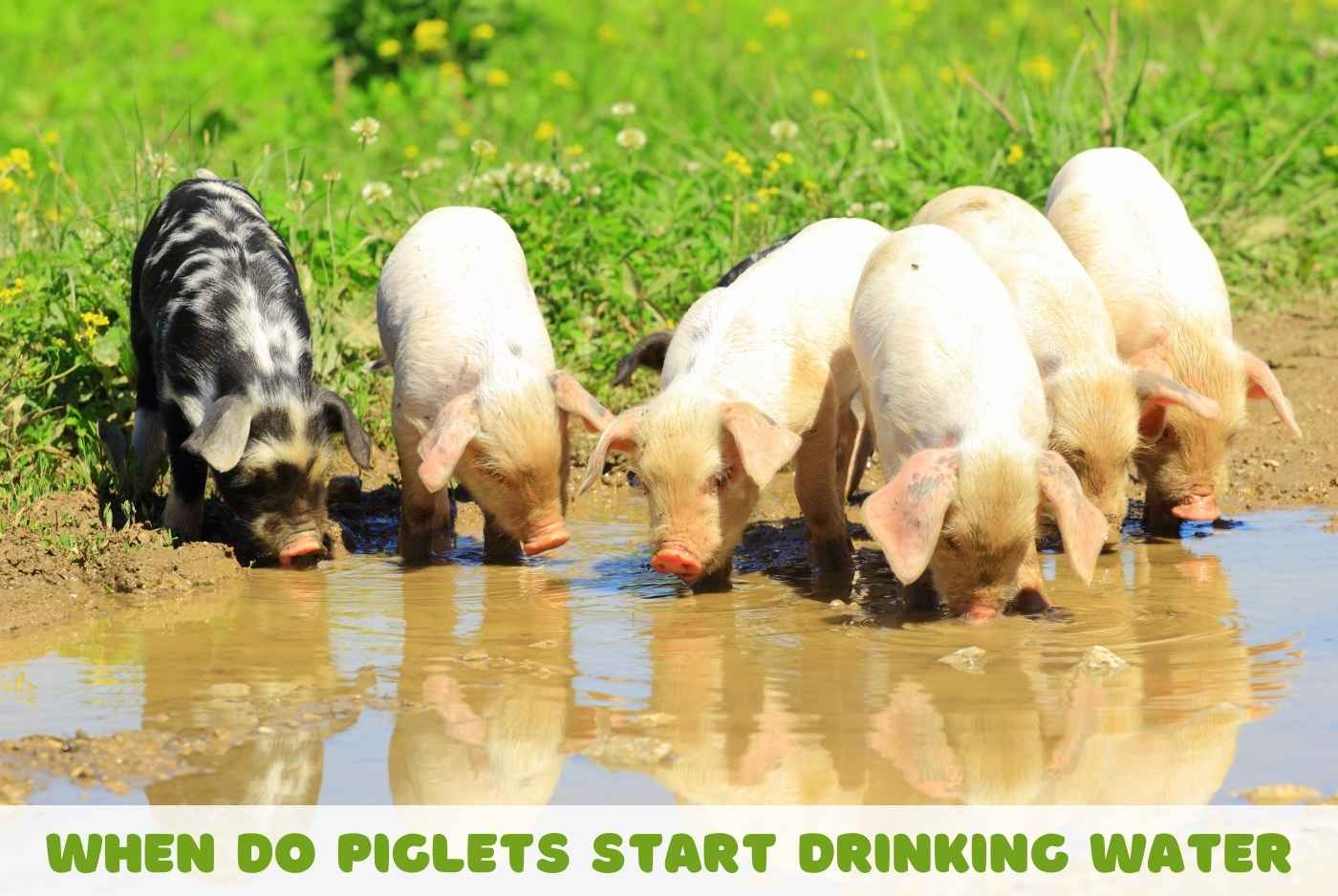Water is a vital resource for piglets, playing a crucial role in their overall health and development. However, the key factor is knowing the right time to introduce it.
As piglets grow and transition from their mother’s milk to solid feed, providing clean and accessible water becomes even more critical to support their well-being and steady growth.

Contents
When to Introduce Water to Piglets?
You can introduce water to piglets around 6 – 7 days of age.
It might be surprising to those new to raising pigs, but let me explain why this is the right age to introduce it.
0 to 2 days of life
In the first 23 hours after their birth, piglets consume the sow’s colostrum. Colostrum contains antibodies, essential nutrients, water, and other vital components. While colostrum is rich in protein and fats, it also helps to hydrate them. Piglets will ger colostruim for the first 24 to 48 hours.
2 to 6 days of life
At this stage, piglets will rely completely on the sow’s milk. Like colostrum, the milk will provide them with both nutrition and hydration. In fact, they will get even more hydration from the milk, as it contains up to 86% water, which is more than colostrum.
6 day of age
Around 6 day of age, you can start offering water to piglets. At this moment, piglets are becoming more active and their gut starts to function more efficiently. Providing water helps promote healthy digestion and can reduce the risk of dehydration, especially if the sow’s milk supply is limited.
Week 1 to 2
Between the ages of 7 to 14 days, piglets should drink water regularly. As they transition to more solid food, their water intake should also increases.
Some farmers prefer to introduce water around 4 days of age. This can be okay for some farms and systems, but many prefer to wait until 6 to 7 days.
There are also some things to consider when your piglets start drinking water:
- Pay attention to water quality. Make sure the water is clean, as dirty water can lead to digestive issues such as diarrhea.
- Ensure that the piglets can access the water easily. Water should be readily available for piglets. You can use a nipple drinker or a water dish. Keep in mind that the nipple drinker should be the right size for piglets, and make sure they know where it is located. Also, it should also be positioned at the correct height for piglets to reach.
- You may need to teach them where the water source is.
Water Intake Recommendations: How Much Should Piglets Drink?
| Age of Piglet | Water Intake (ml per day) |
|---|---|
| Newborn (0-6 days) | No additional water needed (relies on sow’s milk/colostrum) |
| 6-7 Days | 50-100 ml |
| 7-14 Days | 100-200 ml |
| Weaning (3-4 weeks) | 200-400 ml |
| Post-Weaning (4-8 weeks) | 400-600 ml |
Signs of Dehydration in Piglets and How to Prevent It
Recognizing the early signs of dehydration can help you prevent losing newly born piglets.
Some of the signs of dehydration in piglets are:
- Dry Skin: The skin becomes less elastic when the body is not well-hydrated. If the skin does not snap back when pinched, you should take action.
- Weakness and Lethargy: Piglets should be active. If they are unable to stand, move around, and appear sluggish, monitor their water intake and encourage them to drink.
- Dull Eyes: When the body lacks enough water, the tissue around the eyes becomes dehydrated, causing the eyes to appear dull.
- Poor Suckling or No Appetite: Dehydrated piglets show little interest in feeding.
- Cold Extremities: Check the piglets’ ears, legs, and feet. These should be warm; if they are cold, it could indicate that their circulation is affected due to dehydration.
- Diarrhea: Watery stools cause loss of water from the body. Persistent diarrhea can be a sign of dehydration.
The Importance of Water for Piglets’ Growth and Development
Water is essential for piglets’ health, even before they are fully weaned from their mother’s milk, for the following reasons:
Hydration
As piglets grow, they become increasingly active, using up their energy each day as they explore their surroundings or play together. While the sow’s milk provides some hydration, it is not enough to fully meet their needs at this stage. To ensure they remain properly hydrated, they need additional water. This becomes even more crucial in dry environments or during hot weather, where the risk of dehydration is higher.
Digestion
When piglets transition to solid food, they need water to aid in digestion. Water helps by softening the food, making it easier to digest as their digestive system adjusts to processing solid feed. Digestion relies on enzymes to break down food into nutrients that can be absorbed, and water facilitates the activity of these enzymes by creating an optimal environment in the digestive tract. By aiding in the breakdown of solid feed, water ensures that their digestive system processes nutrients effectively.
Thermoregulation
Piglets need water to regulate their body temperature. This is especially important in warm climates, as they cannot sweat to cool themselves.


